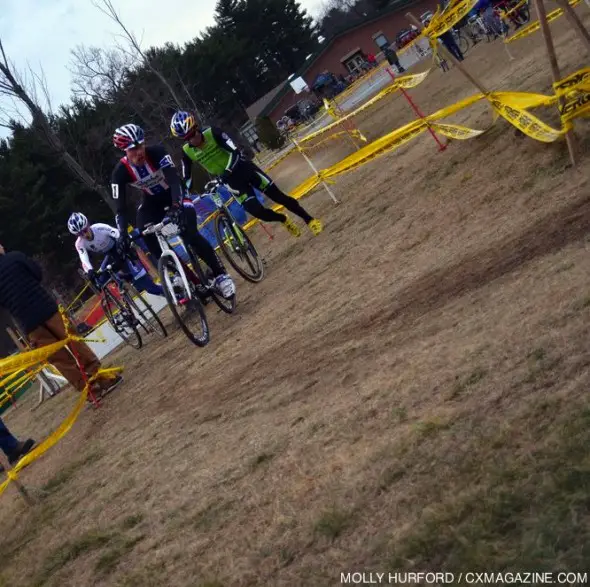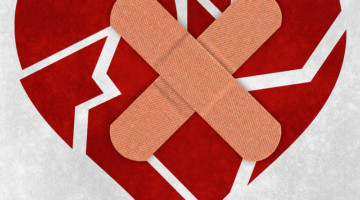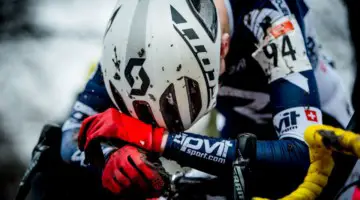
Good thing Tim Johnson had a pit bike and not just wheels on Day 2 of Bay State weekend. © Cyclocross Magazine
Two months ago, we ran an editorial that made the case for pit wheels versus a pit bike. Instantly, the Internet was up in arms: whether riders and racers agreed or disagreed with Brooke Hoyer, they were certainly vocal. But until now, no one turned in a rebuttal article. Today, Chris Mayhew, a coach with JBV Coaching and one of our go-to mechanics for our Mechanical Monday columns, is speaking out against the case for pit wheels.
by Chris Mayhew
I’d like to take a moment to respond to Brooke Hoyer’s article “To Pit Bike, or Not To Pit Bike”. While well-written, I think it ultimately doesn’t stand up the experience of most ’crossers. While it sounds like a nice idea [pit wheels versus a pit bike] the execution is ultimately problematic. To start with, my experience is that most people’s first pit bike is the bike they used
to ride before buying a new one. That means you have a lot of time on that bike and know how it handles. While it may not be as nice as your newer bike, you can still ride it and ride it well. Most people don’t piece together a pit bike, or at least do so based on a frame similar to the one they have, e.g. the aluminum version of their newer carbon ride.
The decision about spending money on a pit bike brings me to two more points. First, don’t blow the bank on your primary bike. To quote John Verheul, “two crappy bikes are faster than one nice bike.” [Ed. Note: Cycle-Smart coach Adam Myerson has made similar statements about having two bikes versus one great one.] Buy something you can get two of, or at least come close to that. But this also brings up another flaw in Boyer’s article. So, point two: suppose you do buy a bunch of wheels. They’re going to need to match. Rim width, spacing and braking surface are all going to need to match. And hopefully, match in weight as well so you won’t shy away from your heavier wheels. And as anyone who has swapped between wheels knows that the hubs don’t always match up exactly. So you better know how to make simple derailer adjustments and hope spoke/derailler interference isn’t an issue between wheels. If the rim width doesn’t match, you’ll need to adjust the brakes to work again. If the brake track material isn’t the same, you might not be able to make a switch on the fly. Oh, and you’ll need to be able to do all of the previous in the middle of a race after you’ve just flatted and run to the pit.
So, what are you going to do? Buy a boatload of matching wheels all in one season? Buy them a few at a time and hope they match? While an extra set of wheels is a great addition to a single bike, it’s not a replacement for another bike at the point you have those kind of funds.
In my experience, I can only think of maybe a half dozen races out of close to 200 that I’ve flatted out of or had a slow leak. However, this season alone I’ve pitted almost every race because of mechanicals (broken spoke, muddy bike, QR skewers loose). That’s not normal for me, but it does point to how much of your race can be saved by a bike and how little by a set of wheels.
Lastly, the cleaning bit is a red herring. It’s not that hard to go to the pit and ask to jump the line 15 minutess before your race. I’ve never had any problem with that and it takes two minutes.
So before you run out and sell your spare bike for some new pit wheels, take a minute to think about what you really use the pit (and pit bike) for!
Ed. Note: after a disastrous weekend where my A bike was run over by a car in the parking lot, and all I had was a spare set of wheels (the pit bike was in a storage unit during a move), I can definitely see the importance of having a pit bike at every race. As an added bonus, it makes for a great commuter/beater bike in the winter for training on nasty days.



























